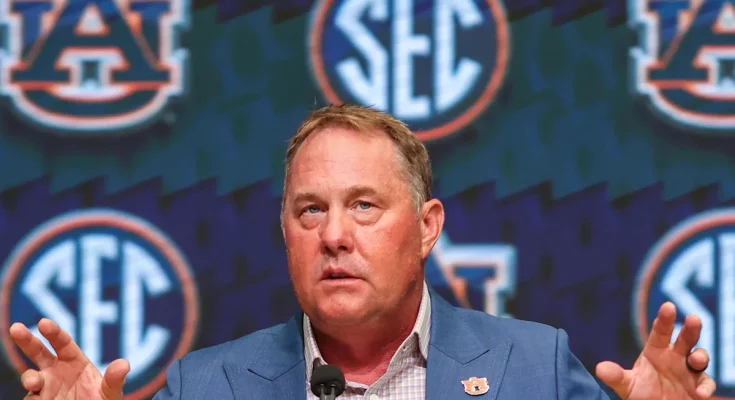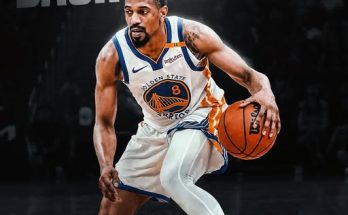The Auburn Tigers have long been a program steeped in tradition, passion, and high expectations. Under the leadership of head coach Hugh Freeze, the Tigers are looking to revitalize their offense with a dynamic and adaptable play-calling system designed to maximize talent and exploit defensive weaknesses. Freeze, known for his offensive ingenuity, has brought a fresh perspective to Auburn’s scheme, blending tempo, versatility, and situational awareness to keep opponents guessing. Understanding how Freeze’s play-calling system operates provides insight into what makes his approach unique and how it could shape Auburn’s success in the coming seasons.
At the core of Hugh Freeze’s offensive philosophy is the concept of tempo manipulation. One of his trademarks is the ability to shift gears seamlessly, alternating between lightning-fast no-huddle sequences and more deliberate, methodical drives designed to control the clock. This unpredictability forces defenses to remain on their heels, unable to settle into a rhythm. Freeze’s system thrives on keeping opponents uncomfortable, whether by speeding up the pace to prevent substitutions or slowing it down to drain momentum. The key, as Freeze has explained, is reading the game’s flow and adjusting tempo based on what gives Auburn the best advantage in any given situation.
Another critical element of Freeze’s play-calling is his reliance on pre-snap motion and formation versatility. Auburn’s offense frequently utilizes shifts, jet sweeps, and motioning receivers to create mismatches and reveal defensive coverages before the snap. By moving pieces around, Freeze can identify whether a defense is in man or zone coverage, allowing quarterback Payton Thorne—or whoever is under center—to make more informed decisions. This approach also forces defenders to communicate and adjust on the fly, increasing the likelihood of blown assignments. Freeze’s background in designing creative route combinations and leveraging speed in space means Auburn’s skill players are often put in positions to win one-on-one matchups.
The running game remains a focal point of Auburn’s offense, as it has been for decades in the SEC. However, Freeze’s system modernizes traditional ground-and-pound principles with an emphasis on RPOs (run-pass options) and zone-read concepts. The offensive line is coached to execute zone-blocking schemes that create cutback lanes, while the quarterback has the autonomy to hand off, keep, or pull the ball and throw a quick pass based on the defensive end’s reaction. This puts immense stress on edge defenders, who must choose between crashing down on the running back or respecting the quarterback’s ability to throw. Freeze’s history of developing dual-threat quarterbacks suggests that Auburn’s signal-callers will be given plenty of opportunities to impact the game both through the air and on the ground.
Passing concepts in Freeze’s system are built on timing, spacing, and exploiting leverage. He favors a mix of play-action deep shots, quick-game slants, and intermediate crossing routes designed to stretch defenses horizontally and vertically. One of his favorite tactics is the “Y-Cross” concept, where a tight end or slot receiver runs a deep crossing route to clear out space for an underneath option or a vertical threat on the opposite side. Freeze also incorporates mesh routes and rub concepts to free up receivers against man coverage, something that has become increasingly popular in modern football. The idea is to create easy, high-percentage throws for the quarterback while still maintaining the threat of explosive plays downfield.
Perhaps the most underrated aspect of Freeze’s play-calling is his adaptability. Unlike some coordinators who stick rigidly to a system, Freeze tailors his approach based on personnel strengths. If Auburn has a dominant running back, the offense may lean more heavily on inside zone and power runs. If the Tigers have a dynamic receiving corps, the playbook might feature more four-wide sets and empty formations to spread the field. Freeze has emphasized the importance of “playing to your players’ strengths rather than forcing them into a scheme,” a philosophy that has helped him find success at previous stops like Ole Miss and Liberty.
Situational football is another area where Freeze’s play-calling shines. His attention to down-and-distance tendencies, red-zone efficiency, and two-minute drill execution is meticulous. In the red zone, for example, Auburn’s offense often utilizes condensed formations and pick plays to create quick separation, knowing that space is limited. On third-and-medium, Freeze might dial up a designed quarterback run or a high-percentage curl route to move the chains. His ability to anticipate defensive adjustments in critical moments has been a hallmark of his coaching career, and Auburn fans can expect a well-prepared team in clutch situations.
Of course, no system is flawless, and Freeze’s approach does come with challenges. The reliance on tempo can sometimes lead to quick three-and-outs, putting additional strain on the defense if the offense isn’t sustaining drives. Additionally, the complexity of pre-snap reads and RPO decisions requires a quarterback with a high football IQ and quick processing ability. If the offensive line struggles with protection or the quarterback makes poor choices, the system can sputter. However, Freeze’s track record suggests that with the right personnel, his scheme can be incredibly difficult to defend.
As Auburn continues to evolve under Freeze’s leadership, the play-calling system will remain a fascinating aspect to watch. His blend of tempo, motion, RPOs, and situational awareness creates a multifaceted attack capable of adapting to any opponent. While execution will ultimately determine the Tigers’ success, the foundation is in place for an offense that can compete at the highest level in the SEC. For Auburn fans, Freeze’s arrival represents not just a new chapter, but a potentially transformative era in how the Tigers move the football. The pieces are there—now it’s about putting them all together on game day.



